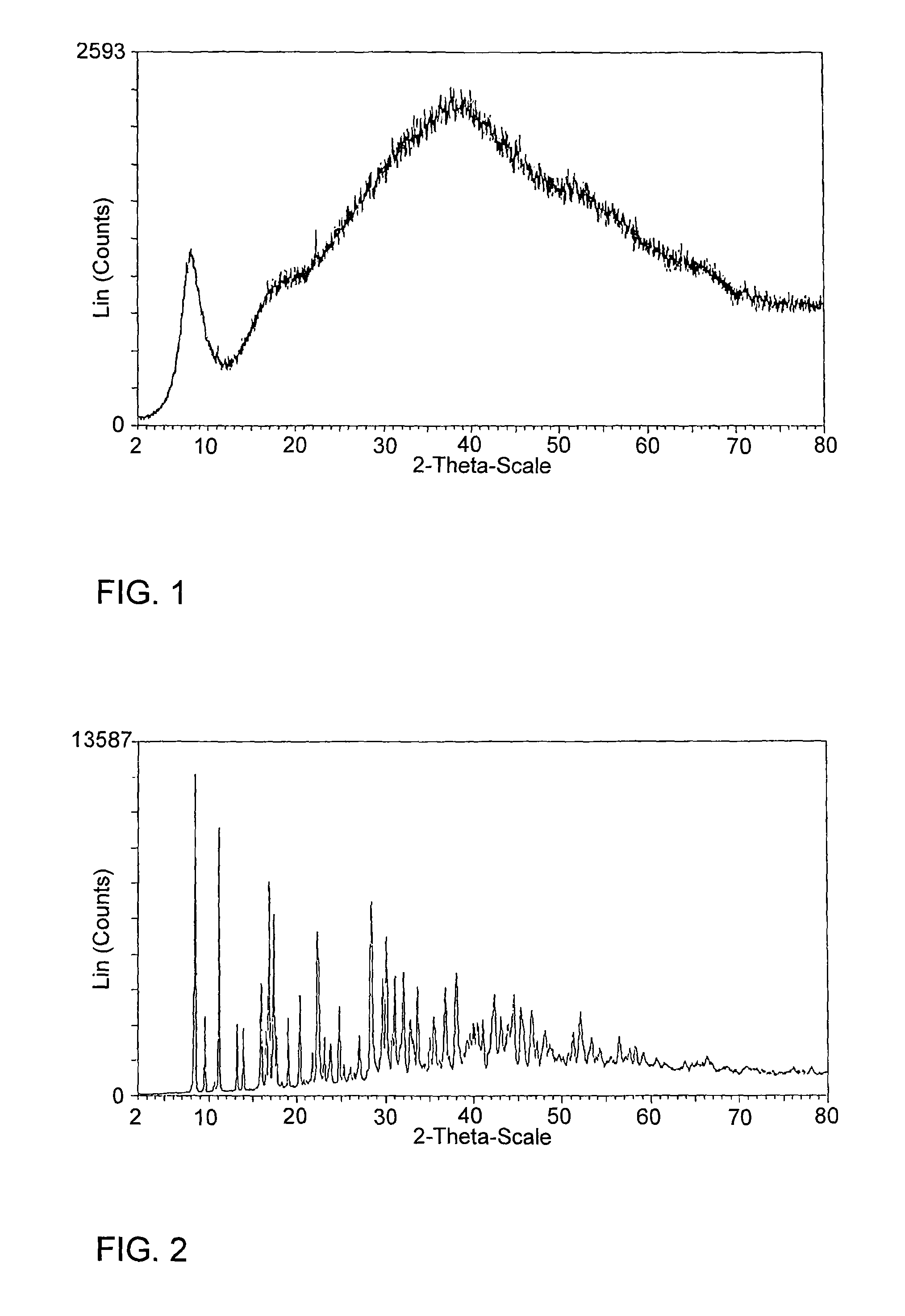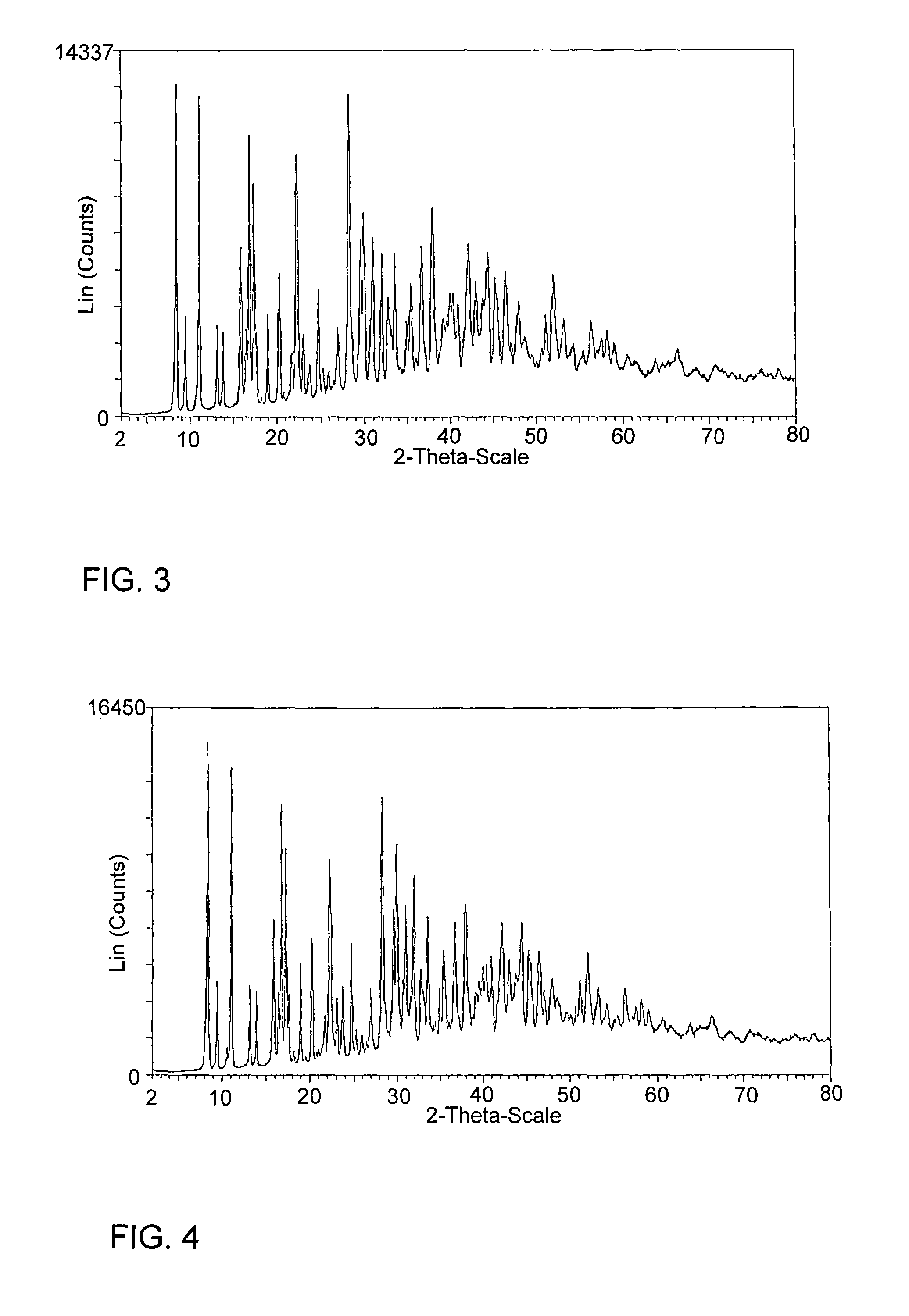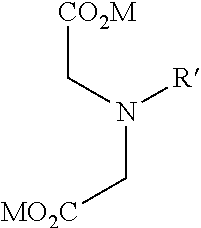Process for the preparation of a powder comprising one or more complexing agent salts
a technology of complexing agent salts and powders, which is applied in the direction of detergent powders/flakes/sheets, detergent bleaching agents, detergent compounding agents, etc., can solve the problems of powder formation, difficult to generate in spray towers, and thermal lability, and achieve good storage and processing properties, improve crystallinity, and simple
- Summary
- Abstract
- Description
- Claims
- Application Information
AI Technical Summary
Benefits of technology
Problems solved by technology
Method used
Image
Examples
working examples
Working Example 1 (for Comparison)
Classic Spray-Drying without the Addition of Crystalline Fine Dust
[0092]A quantitative stream of 60 kg / h of an aqueous solution of Na3-MGDA with a solids content of 40% was evaporated in a plate heat exchanger evaporator (heating area 1.7 m2) to a solids content of 59% and separated in a separating container. The evaporation was carried out at a wall temperature of 152° C. (steam heating) and at a pressure of 2.5 bar abs in the separator.
[0093]The evaporated solution was metered into the downstream piston membrane pump at a temperature of ca. 128° C. using a gear pump and sprayed into a spray-tower using a single-material nozzle.
[0094]The spray-tower had a diameter of 800 mm and a length of 12 m. The spray-tower was operated with a quantity of air of 1400 kg / h and a gas inlet temperature of 160° C. The product outlet temperature was 127° C. and the solids content of the dry product 94.1%. The product was separated out via a 2-point discharge (direct...
working example 2 (
According to the Invention)
Spray-Tower with the Addition of Crystalline Fine Dust
[0097]A quantitative stream of 75 kg / h of an aqueous solution of Na3-MGDA with a solids content of 40% was evaporated in a plate heat exchanger evaporator (heating area 1.7 m2) to a solids content of 60% and separated in a separating container. The evaporation was carried out at a wall temperature of 156° C. (steam heating) and at a pressure of 2.5 bar abs in the separator.
[0098]The evaporated solution was metered into the downstream piston membrane pump at a temperature of ca. 130° C. using a gear pump and sprayed into a spray-tower using a single-material nozzle.
[0099]The spray-tower had a diameter of 800 mm and a length of 12 m. The spray-tower was operated with a quantity of air of 1400 kg / h and a gas inlet temperature of 202° C. A mass stream of 4 kg / h of crystalline fine dust Na3-MGDA was blown into the spray-tower by means of an injector. The product outlet temperature was 99° C. and the solids c...
working example 3 (
According to the Invention)
Agglomerating Spray-Drying in a Spray-Tower with Integrated Fluidized Bed (Fluidized Spray Dryer (FSD))
[0102]500 g of a 41% strength aqueous Na3-MGDA solution with a total solids content of 46% by weight was diluted with 150 g of deionized water. The solution was then stirred in a glass flask with stirrer at room temperature and then fed to a spray dryer with integrated fluidized bed on the laboratory scale, with introduction of drying air at 130° C., an inlet air temperature of the fluidized bed of 110° C. and atomized via a two-material nozzle. In the first phase of the drying process, the liquid droplets were dried, with formation of the granulation seeds in the bed. The bed temperature was then reduced in order to initiate the granulation phase, during which the granulation cores were agglomerated with feed solution. The resulting granules were removed continuously from the spray dryer. Granulation of the solution was carried out in a range for the bed...
PUM
| Property | Measurement | Unit |
|---|---|---|
| pressure | aaaaa | aaaaa |
| residence time | aaaaa | aaaaa |
| degree of crystallinity | aaaaa | aaaaa |
Abstract
Description
Claims
Application Information
 Login to View More
Login to View More - R&D
- Intellectual Property
- Life Sciences
- Materials
- Tech Scout
- Unparalleled Data Quality
- Higher Quality Content
- 60% Fewer Hallucinations
Browse by: Latest US Patents, China's latest patents, Technical Efficacy Thesaurus, Application Domain, Technology Topic, Popular Technical Reports.
© 2025 PatSnap. All rights reserved.Legal|Privacy policy|Modern Slavery Act Transparency Statement|Sitemap|About US| Contact US: help@patsnap.com



